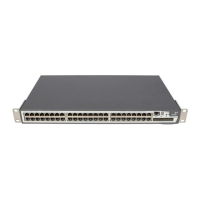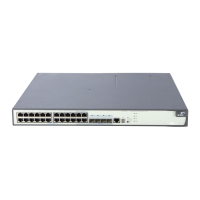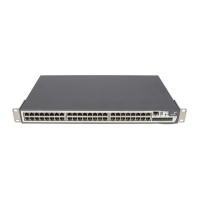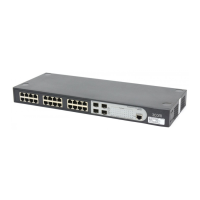190 CHAPTER 6: USING ROUTING PROTOCOL COMMANDS
display ospf error Syntax
display ospf [
process-id
] error
View
All Views
Parameter
process-id
Enter the process ID of OSPF, ranging from 1 to 65535. The command
is applied to all current OSPF processes if you do not specify a process ID.
Description
Use the display ospf error command to view OSPF error information.
Example
To display the OSPF error information, enter the following:
<SW5500>display ospf error
OSPF Process 1 with Router ID 1.1.1.1
The information displays in the following format:
OSPF packet error statistics:
0: IP: received my own packet 0:OSPF: wrong packet type
0: OSPF: wrong version 0:OSPF: wrong checksum
0: OSPF: wrong area id 0:OSPF: area mismatch
0: OSPF: wrong virtual link 0:OSPF: wrong authentication type
0: OSPF: wrong authentication key0:OSPF: too small packet
Tab le 28 Output Description of the display ospf cumulative Command
Field Description
IO Statistics Type Type of input/output OSPF packet.
Input Number of received packets.
Output Number of transmitted packets.
ASE Number of all ASE LSAs.
checksum sum Checksum of ASE LSAs.
LSAs originated Number of originated LSAs.
received Number of received LSAs generated by other routers.
Router Number of all Router LSAs.
SumNet Number of all Sumnet LSAs.
SumASB Number of all SUMASB LSAs
Area Neighbors Number of neighbors in this area.
Interfaces Number of interfaces in this arera.
Spf Number of SPF computation count in this area.
rtr, net,
sumasb,
sumnet
Number of all LSAs in this area.
Routing
Table
Intra Area Number of intra-area routes.
Inter Area Number of inter-area routes.
ASE Number of external routes.
